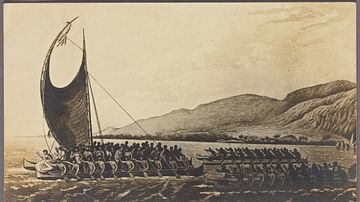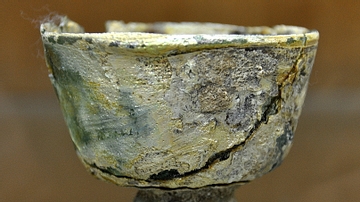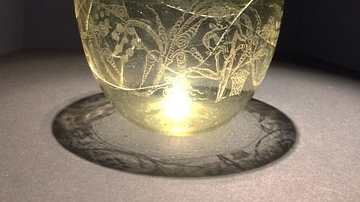Illustration
This glass vessel, known as a claw beaker after its claw-like decoration, is an early example of a type that grew popular throughout Anglo-Saxon England. Its form is similar to Late Roman vessels, reflecting the cultural transitions that took place in this time of migration and settlement. The beaker came from a woman's grave dating to the mid-500s CE, and was therefore around 100 years old when buried. Perhaps, it was a a prized heirloom, passed on through generations. From Mucking, Essex, England, UK. (The British Museum, London)
About the Author
Cite This Work
APA Style
Amin, O. S. M. (2016, May 13). Glass Claw Beaker. World History Encyclopedia. Retrieved from https://www.worldhistory.org/image/5103/glass-claw-beaker/
Chicago Style
Amin, Osama Shukir Muhammed. "Glass Claw Beaker." World History Encyclopedia. Last modified May 13, 2016. https://www.worldhistory.org/image/5103/glass-claw-beaker/.
MLA Style
Amin, Osama Shukir Muhammed. "Glass Claw Beaker." World History Encyclopedia. World History Encyclopedia, 13 May 2016. Web. 15 Apr 2025.








